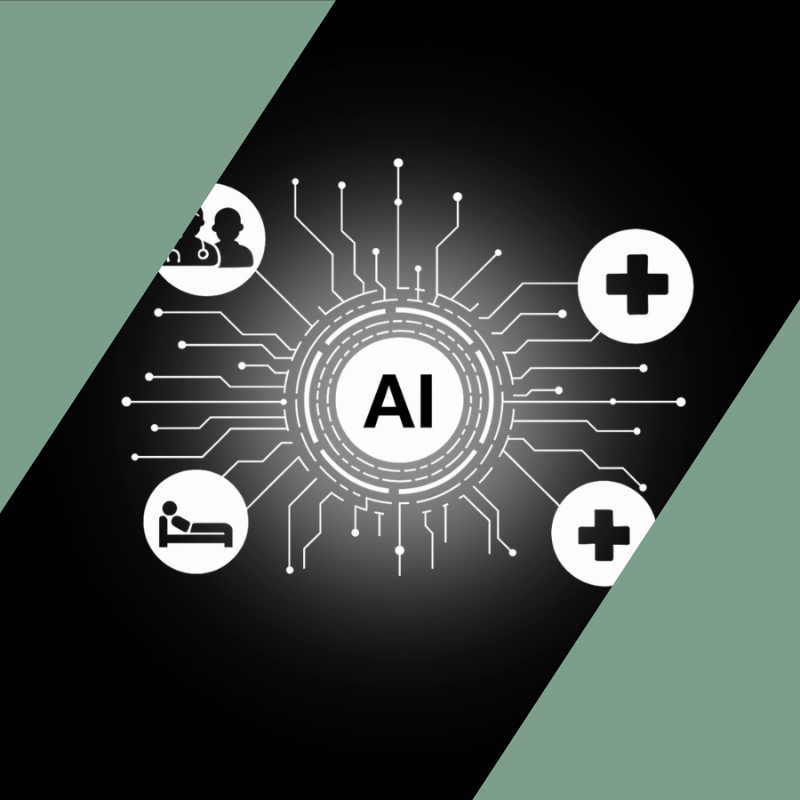The Four Ds of Digital Health

The Four Ds of Digital Health
In the dynamic landscape of healthcare’s digital transformation, where data access, timeliness, and quality are paramount, a fresh framework emerges: the Four Ds of Digital Health
Unlike conventional stakeholder-centric models, the Four Ds zero in on the essential functions individuals seek from healthcare: accessing the right mix of professionals, medications, and tests. However, a glaring obstacle obstructs progress: the sorry state of healthcare data
A student of mine in my side hustle as an adjunct lecturer once created “Four Gs” related to her academic project; humorously, she called it “a business school approach to remembering things.” In that spirit, I’ve been thinking about how best to encapsulate and frame the role of data access, timeliness, and quality as we collectively reshape healthcare as a digital-first industry.
Hence, I’d like to propose the Four Ds of Digital Health.
Before diving in, it is worth reflecting on the services we all enjoy daily that are only possible with accurate, up-to-date data. Like many frequent travelers, I often use the Uber, Starbucks, Orbitz, and HotelTonight apps. None of these services could function without accurate information about the “state” of location (Uber), inventory (Starbucks*), pricing (Orbitz) or quality (Hotel Tonight). Most of these apps and many others we use in our daily lives need real-time, accurate data about all of those elements. Some, such as Starbucks, are closed systems that will not let you know that another coffee shop is closer to you, while others are more like the more open marketplaces (e.g. Amazon) we have come to love: but at least they all are predicted on accurate, realtime data.
In healthcare by contrast, there is not reliable, up-to-date information about basic things like the address of a medical group, the status of a hospital or its on-staff doctors with respect to a provider network, the medical history of a patient, or the status of a health plan deductible. This is even true in closed systems like Epic where some health systems can’t seem to get out of their own way. Simply put, we cannot build services that improve the quality and cost of healthcare — thereby expanding access — without solving the sorry state of healthcare data.
Getting to the 4 Ds, I was tempted by other alliterative quartets. Often used is the four Ps of healthcare: patient, provider, plan, and pharma. That works, but it speaks more to the stakeholders than to the “jobs to be done”. I flirted with four As: access, automation, artificial intelligence, and accountability, but it felt too abstract.
Hence, I offer 4 Ds that are mutually exclusive and collectively exhaustive, while also upgrading DATA to the central role it deserves:
– Doctors (by which I include all care providers overseen by doctors, with everyone “at the top of their license” or the hospitals in which doctors do procedures)
– Drugs (including both the benefit from PBMs and the delivery from pharmacies)
– Diagnostics (labs, imaging, etc.)
– Data (which you could argue is orthogonal to the others, but as mentioned above needs to be treated as a key pillar, so I’m bending the framework accordingly)
By the way, you may say these also are not “jobs to be done”. That is true, but they are closer to that framing because what people really want to “get done” in healthcare is to stay well and address problems; this means they need the right mix of doctors, drugs, and diagnostics. What stands in their way are the myriad process breakdowns we all have come to accept driven by health plan bureaucracy, provider ineptitude, and related technology breakdowns; as well as the (criminal) conspiracy that is our incumbent PBM model. If you are sick, if you are managing a chronic condition, or if you merely seek to access preventative care, you are in the market for a doctor, a drug, or a diagnostic.
What makes all of this so frustrating is that our data model (our 4th D) is broken. Our data is siloed and often inaccurate; and few of the participants in the industry are interested in changing that. Remember when the Cures act opened up health data access and Epic took out a full page ad to explain to Congress why this would undermine quality? Ever notice how payers and providers treat “price” like a national security secret? Some have openly speculated that payers want provider data to be opaque, so that they can field “ghost networks” that meet network adequacy requirements in a phony fashion (I don’t share this view, but I empathize with those who wonder how we can easily access the hours of the deli down the street on our phones and yet major payers seem unable to provide accurate street addresses of the providers in their networks).
Innovation comes from clinicians, technologists, and business people working together to improve the processes by which people access the 4 Ds. With the advent of AI, it is now every more clear that the promise of value based care models, patient-centric care management platforms, and improvements to administrative cost all hinge on data quality improving dramatically. And, fittingly, the data we need improved relates directly to the other three Ds and deserves a full seat at the table.
– Doctors: We have “hacks” to access doctor’s (or some of doctor’s) schedules from early innovators like ZocDoc, but few solutions actually expose the inventory of provider time to the world for use and scrutiny, and the availability of “cash pricing” is scarce. New companies offering provider data APIs hold promise, but solutions also need to be adopted within the enterprise to ensure that provider data is accessible, actionable, and accurate. We need more than just online booking; we also need to know details about provider services and quality. Even more importantly, we need to know the PRICE of services, so patients (or doctors who navigate their care) can see what things actually cost. In short, we need a HotelTonight for medical care. We need doctors to simply explain what they need to be paid per hour (or, if you want to be fancy, per RVU). We should just cut to the chase: 15 minutes with an internist should cost about $100; a specialist should cost about twice that; NPs should be at least 25% less. If we just cut through the morass of “visit leveling” and modifiers, we can acknowledge that what we have is a broken marketplace for provider time. We should be able to expose the schedules and the prices, a la HotelTonight. Providers take home about half of the top-line today due to administrative bloat; with innovation those costs can come down, potentially reduction actual costs.
– Drugs: Anyone who has stood in front of the CVS counter with a doctor on one phone line and the PBM on the other knows how maddening it is to sync up the various parties who control the distribution of drugs. Again, there are “hacks” such as drug discount cards and related services like GoodRx, but what we need is a fundamental redesign. PBMs who talk about “average wholesale price” are disingenuous at best. Platforms like CapitalRx represent infrastructure to change the game and link prices to proper reference data. Some disrupters also are promoting the potential of biosimilars, which also would reduce cost if they didn’t eat into the profits of the PBM rebate game. PBMs also make a killing on generics where market forces should permit patients to pay the real costs of those medications. In short, by exposing data about what these medications really cost, we can begin to present tradeoffs to providers and patients who increasingly need to focus on budgets for care.
– Diagnostics: In some areas, we have achieved scaled low-cost tests, as with bloodwork at the national chains. In other ways, the data monopolies of health systems inhibit a real market from developing for services like imaging. Most people know of times when the big health system implies or states outright that they can’t look at images created outside their four walls. Similarly, patients often need to resort to “sneaker net” to carry images on CDs or as films. This is nuts and it’s wrong that health systems we are supposed to trust will not enable use of imaging that would cost dramatically less if done in a place that doesn’t have primates in the basement. What is missing here is a data network that can disentangle the imaging from the radiology reads. It is illegal to require patients to use only your own services and with data liberation we should be able to put an end to such misuses of market power. With a surge in new diagnostic possibilities, from genetic tests to cancer biomarkers, diagnostics also will need to yield to the power of platforms and markets to reveal price and other tradeoffs so the health fiduciaries out there can make better decisions in the interest of patients.
Which brings us back to data. If our health data was plentiful and portable, we could simplify the way we pay providers, rationalize the drug payment model, and open-up a marketplace of diagnostic solutions that would cost much less than what we pay to oligopoly health systems. Yes, data runs orthogonally to the other three Ds, but by giving it its own space as another “D” we can begin to rationalize and push the other three Ds to move forward. Providers, payers, pharma and diagnosticians would love to sit on the data and mete it out if and when it suits their interests; but we all would benefit dramatically more if data were open so the innovators can do their thing.
So, how will we get there? A hopeful data roadmap would include regulation to require data sharing with patients and providers (and crack down on market power abuses), development of data utilities and related APIs, and enterprise solutions to bring payers, providers, and pharmacies kicking and screaming into a modern data model. We also need marketplaces that make the cost and quality of doctors, drugs, and diagnostics crystal clear to those who control health budgets and to patients who increasingly have their own funds to allocate. As with the innovation we have seen in other areas of our lives, if we can focus on and fix the last D, data, we can unlock a new era of enhanced services at lower costs across the other three Ds.
And what does this have to do with digital health? Everything. We already have the ability to care for people across state lines via telemedicine, route patients to lower cost care settings, and leverage AI to find insights and solutions at a dramatically lower cost, IF the regulators permit it and the data is at hand. Innovators and their investors are ready to go and already are making a dent in these problems. And/but, if those sources of creative destruction had better data that was more fluid, more accurate, and more actionable, the innovation and improvement in our health system would be dramatic and profound.
So, let’s embrace technology and clean-up our data act.
Our health depends on it.


